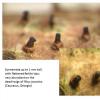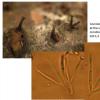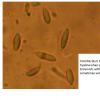
01-02-2014 13:15
 Alex Akulov
Alex Akulov
Dear FriendsAt first glance, sporulation of the fu

28-01-2014 23:53
 Yannick Mourgues
Yannick Mourgues
Trouvé sur tige décortiquée de Rosa sp.Périth�

28-01-2014 11:32
Found 28-01-14 in Attica Greece, in Cistus monspel

30-01-2014 22:40
Hello, On Fallopia japonica I found this species.

29-01-2014 13:08
Ida BruggemanGrowing on populus-twig. Small asco without defini

29-01-2014 20:17
 Joop van der Lee
Joop van der Lee
Found on cow dungFruitbody does not have a well de

30-01-2014 12:50
SYLVAIN ARDBonjour,Si quelqu'un a certaines de ces référenc
Coelomycete from Rhus javanica
Alex Akulov,
01-02-2014 13:15
 Dear Friends
Dear FriendsAt first glance, sporulation of the fungus, shown in attached photo, reminds pycnides. However, conidiophores with conidia formed on the upper flattened part of the black structures rather than inside. Moreover, in these black protrusions does not have any cavities, i.e. they are solid and very dense. Is it possible to assume that this is a sinnemata?
Have you already seen something like this before?
Thanks in advance,
Alex


